Today’s detour was not, in fact, entirely off-route. As we drove north out of Blackfoot, Idaho, I saw several signs marking the highway as the Goodale Cutoff of the Oregon National Auto Tour.
It was a desolate, dismal scenery. Up or down the valley as far as the eye could reach or across the mountains and into the dim distance the same unvarying mass of black rock. Not a shrub, bird nor insect seemed to live near it. Great must have been the relief of the volcano, powerful the emetic, that poured such a mass of black vomit.
Julius Caesar Merrill, a pioneer traveling Goodale’s Cutoff in 1864. Collected by the National Park Service.
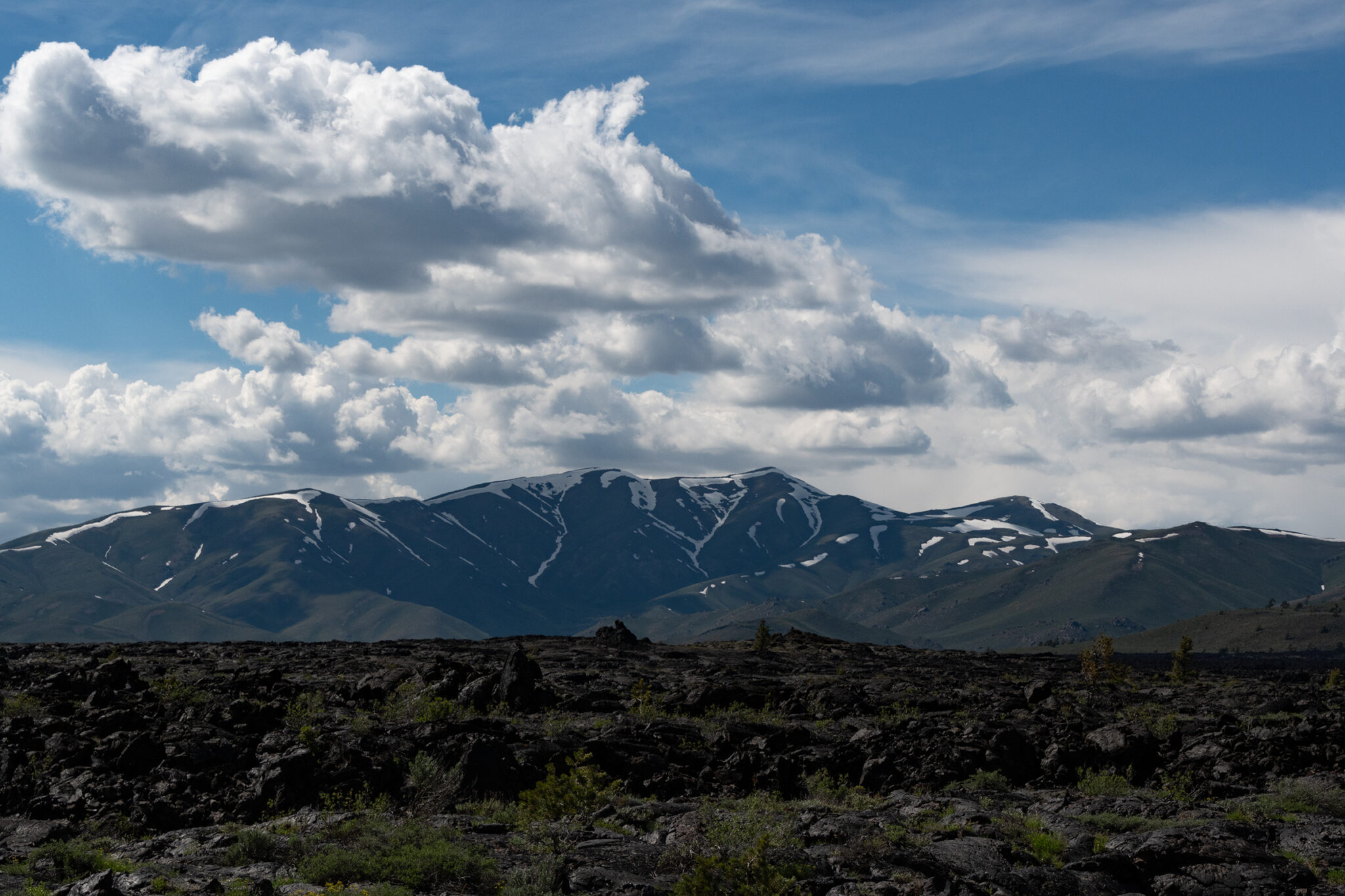
“In 1862 an emigrant party asked guide Tim Goodale to lead them west from Fort Hall on the cutoff pioneered by Jeffrey. They hoped the alternate trail would enable them to reach the Salmon River gold fields more directly. Goodale succeeded in leading a group of 1,095 people, 338 wagons, and 2,900 head of stock safely from Fort Hall to Boise. It took this enormous wagon train — the largest to travel any section of the Oregon Trail — over 3 hours to get into or out of camp.
“By 1862, the Northern Shoshone and Bannock tribes were beginning to resist the intrusion of settlers into their homeland. In August of that year, Shoshone Indians ambushed a wagon train at Massacre Rock, killing 10 people. The growing Indian hostility along the trail resulted in increased demand for a safe alternative. In 1863, seven out of every ten wagons en route from Fort Hall to Boise took Goodale’s Cutoff instead of the main Oregon Trail.”
We began to see lava fields many miles before our turn to Craters of the Moon National Monument. But before we even made it that far, George discovered something.
EBR-1, The First Nuclear Power Plant
US Highway 26 runs through Idaho National Lab, the site of America’s first, largest push into the peaceful use of nuclear physics — for the generation of electrical power. There is a free museum at the EBR-1, the world’s first “breeder reactor,” a reactor that produces more fissile material than it requires, and produced a useable amount of electrical power beyond what was required to operate it.
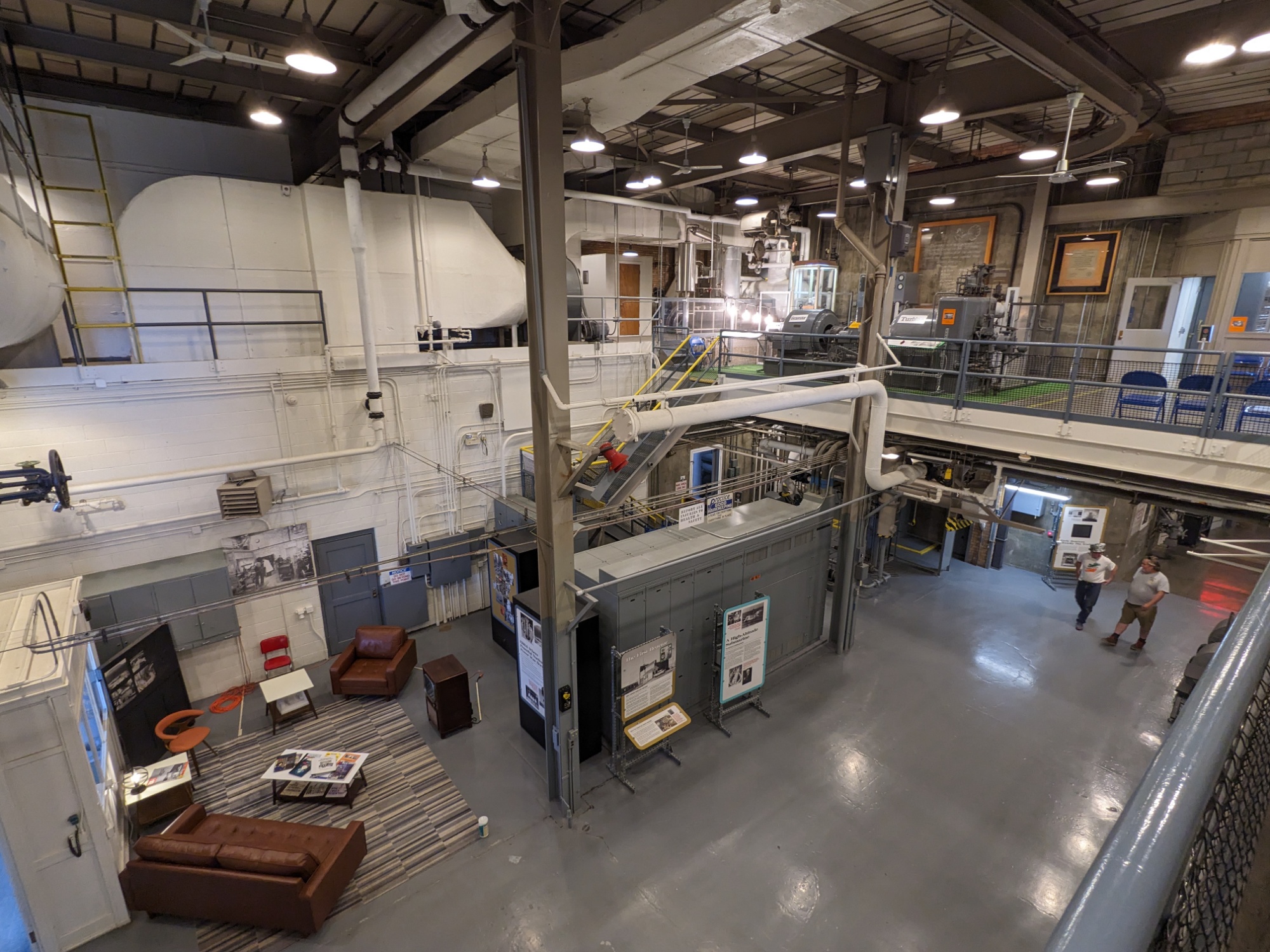
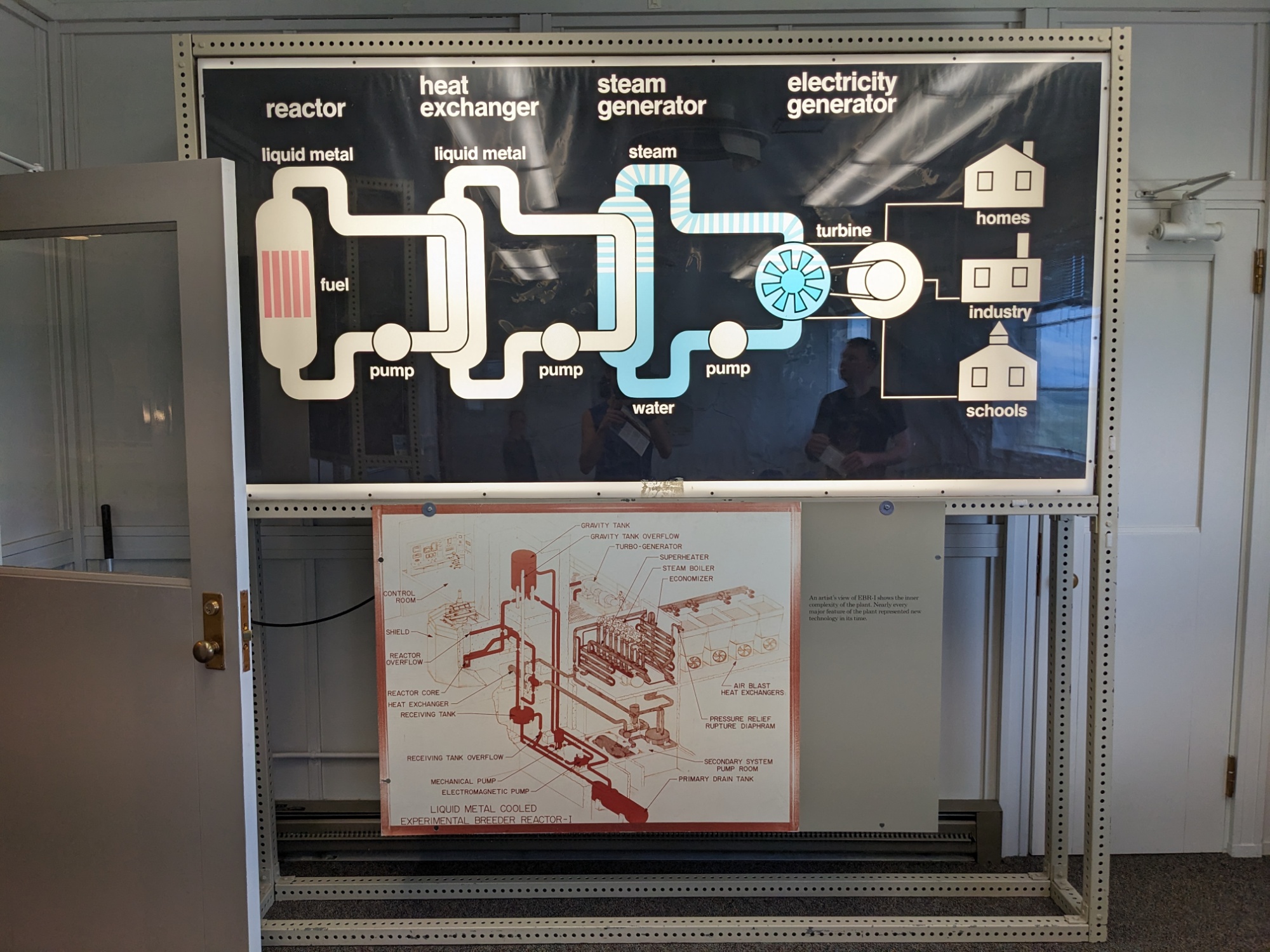
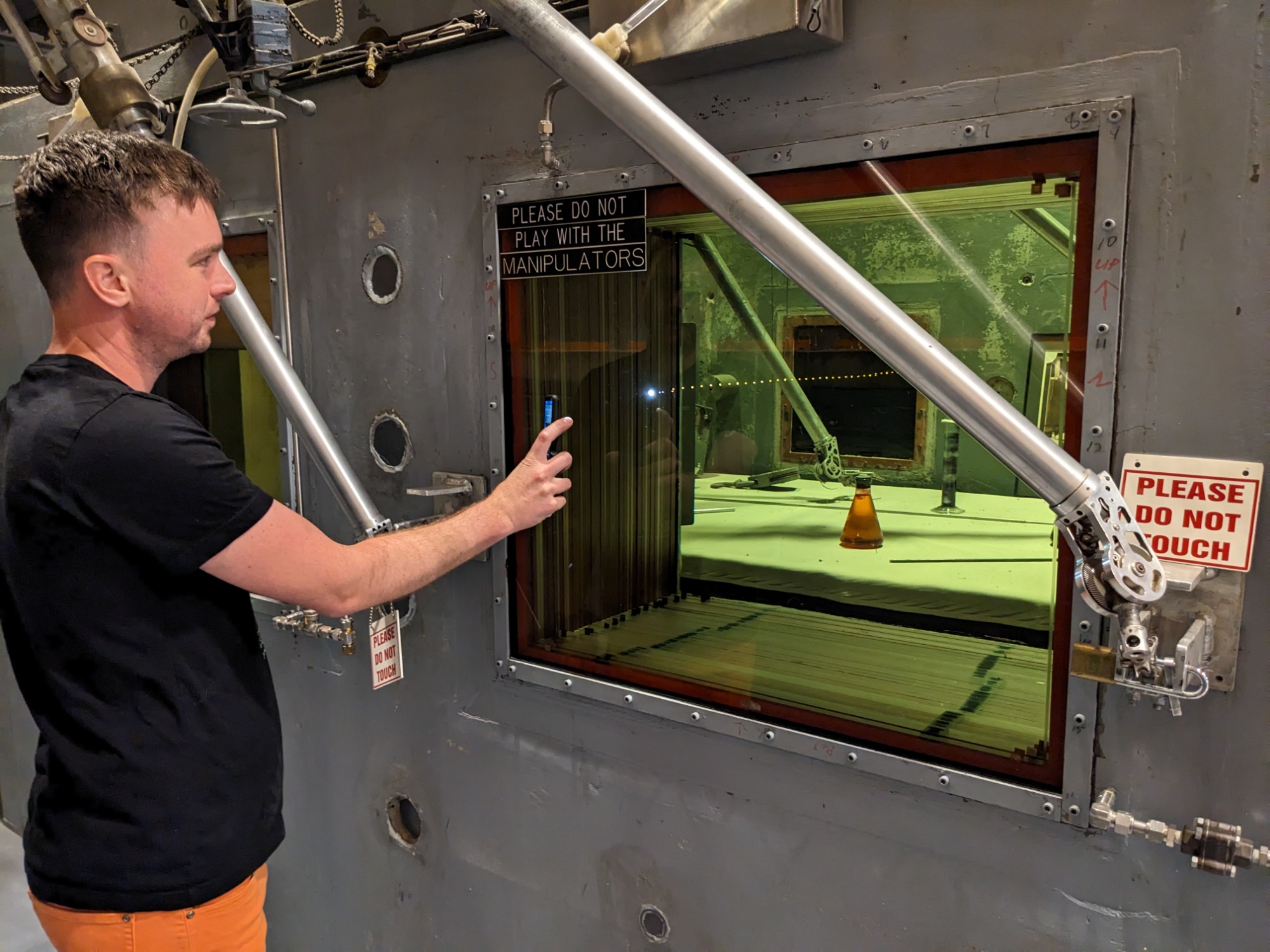
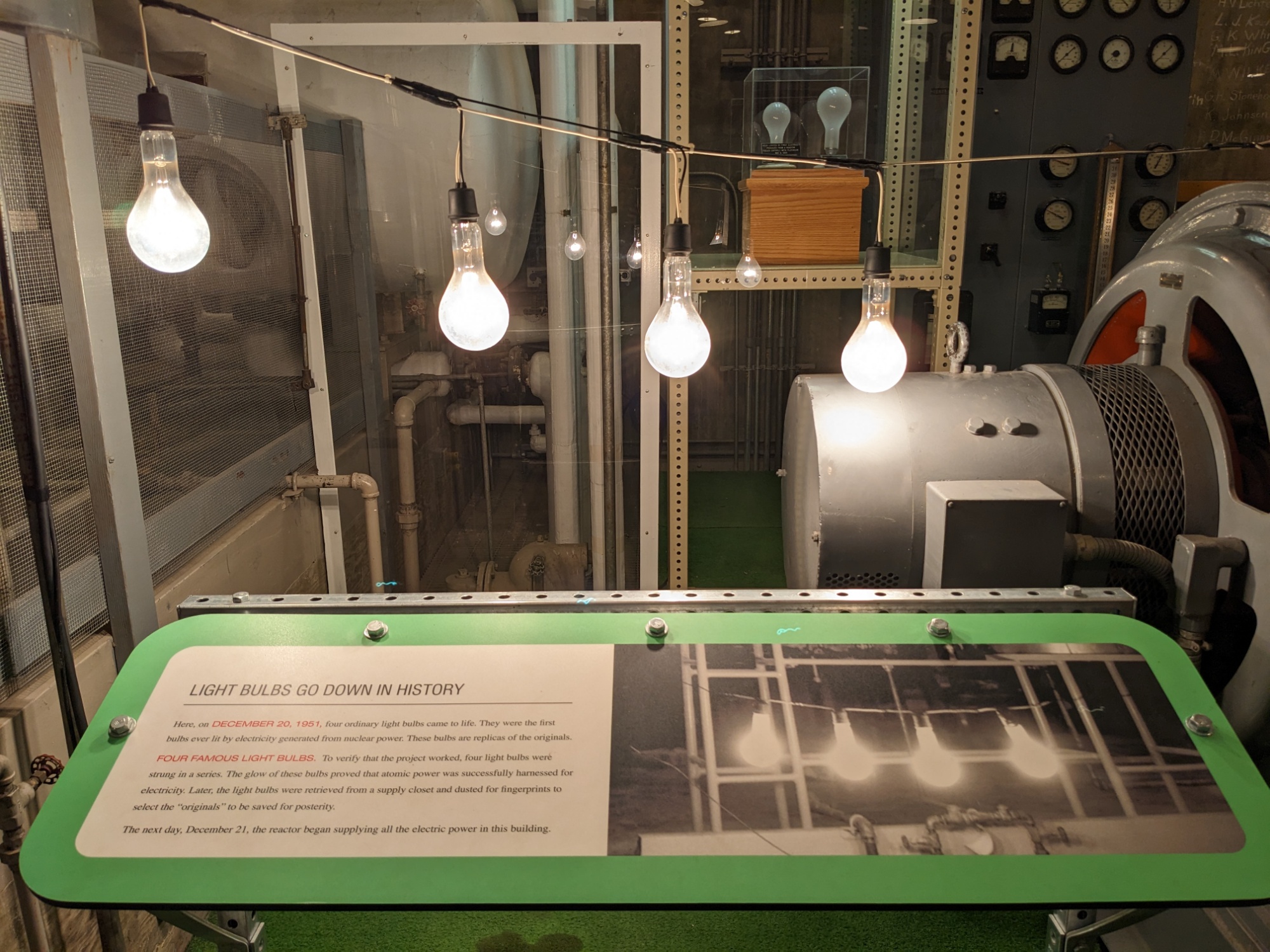

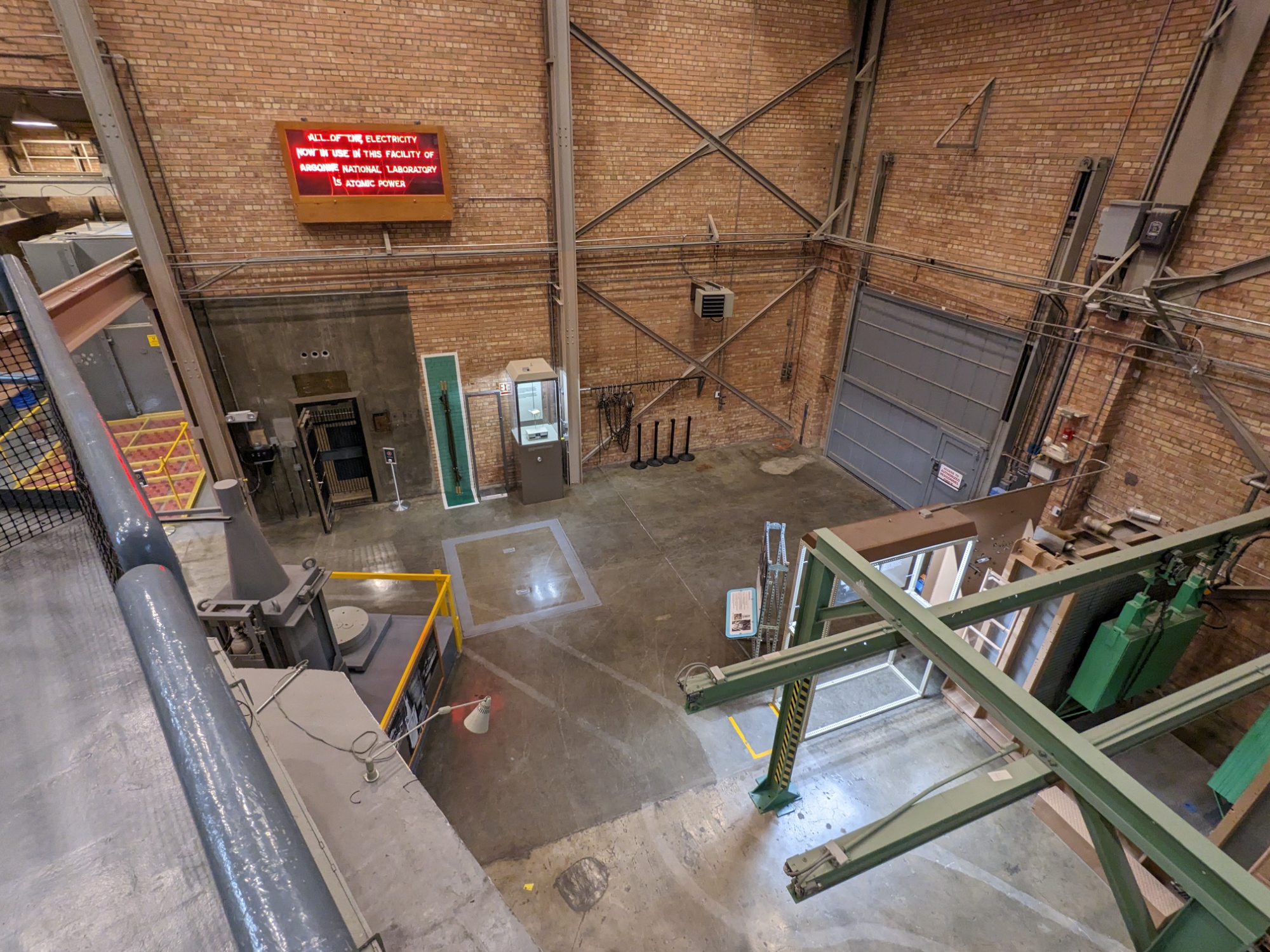
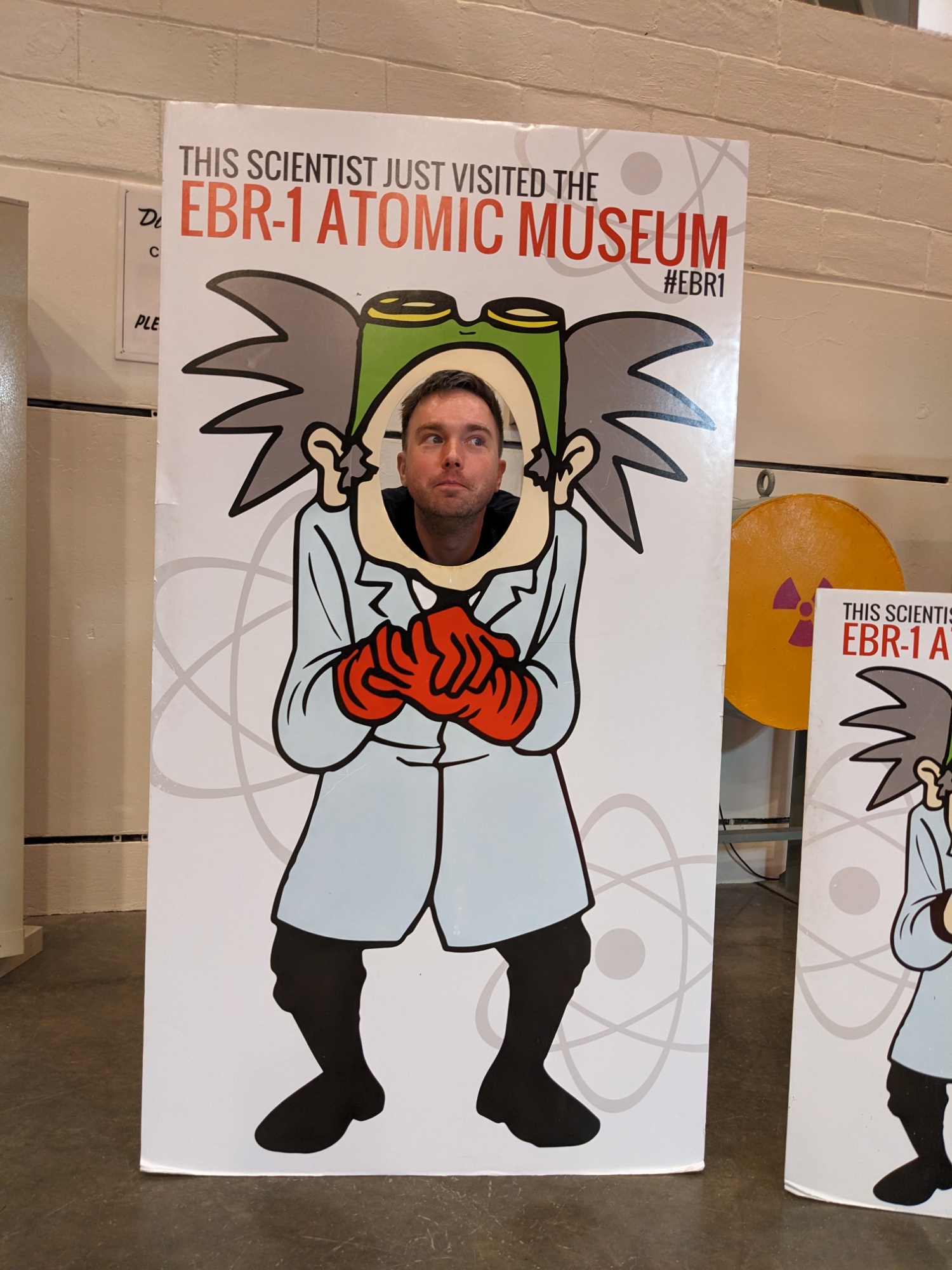
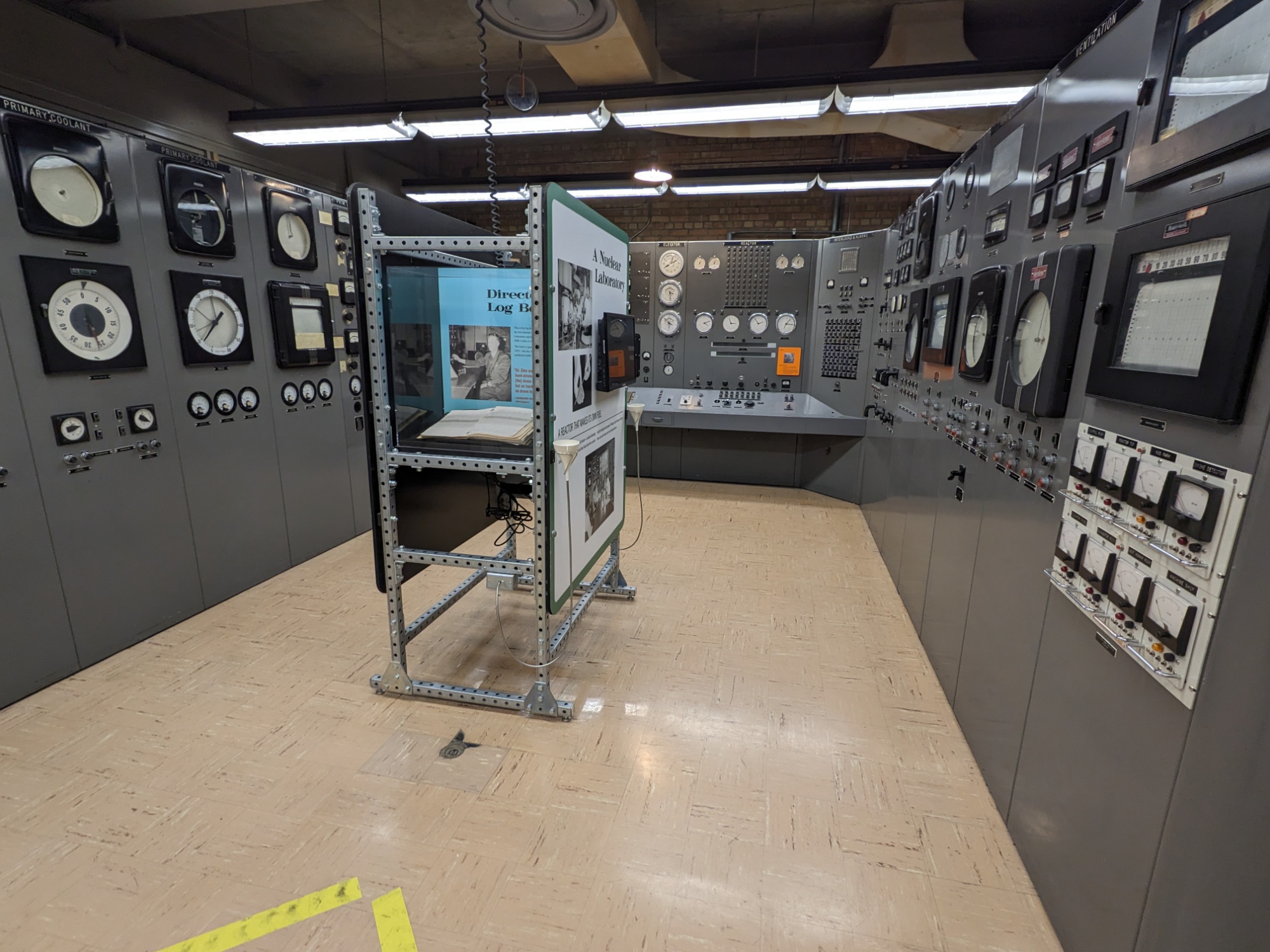
And the nearby town of Arco, Idaho was the first city to be entirely nuclear powered!
Craters of the Moon National Monument
Back on the highway, it was a short drive down to the national monument. Can you imagine the despair of the pioneers who left the grasslands of Nebraska, crossed the Wyoming deserts, and arrived into the hellscape of an endless lava field? I had no idea that pioneers came this way. And while the Goodale Cutoff stayed a bit north of the park, largely along present-day Highway 26, there sure was a lot of lava rock and desolation to be had along the route. I was surprised that wildflowers and desert scrub bushes will grow out of it, so the land looks green-ish at a distance, but it would have been another stretch of little grazing and almost no usable water.
But it was beautiful and other-worldly. The fire-and-ice combination of lava fields against a backdrop of snow-covered peaks was a huge departure from what we’ve seen so far.
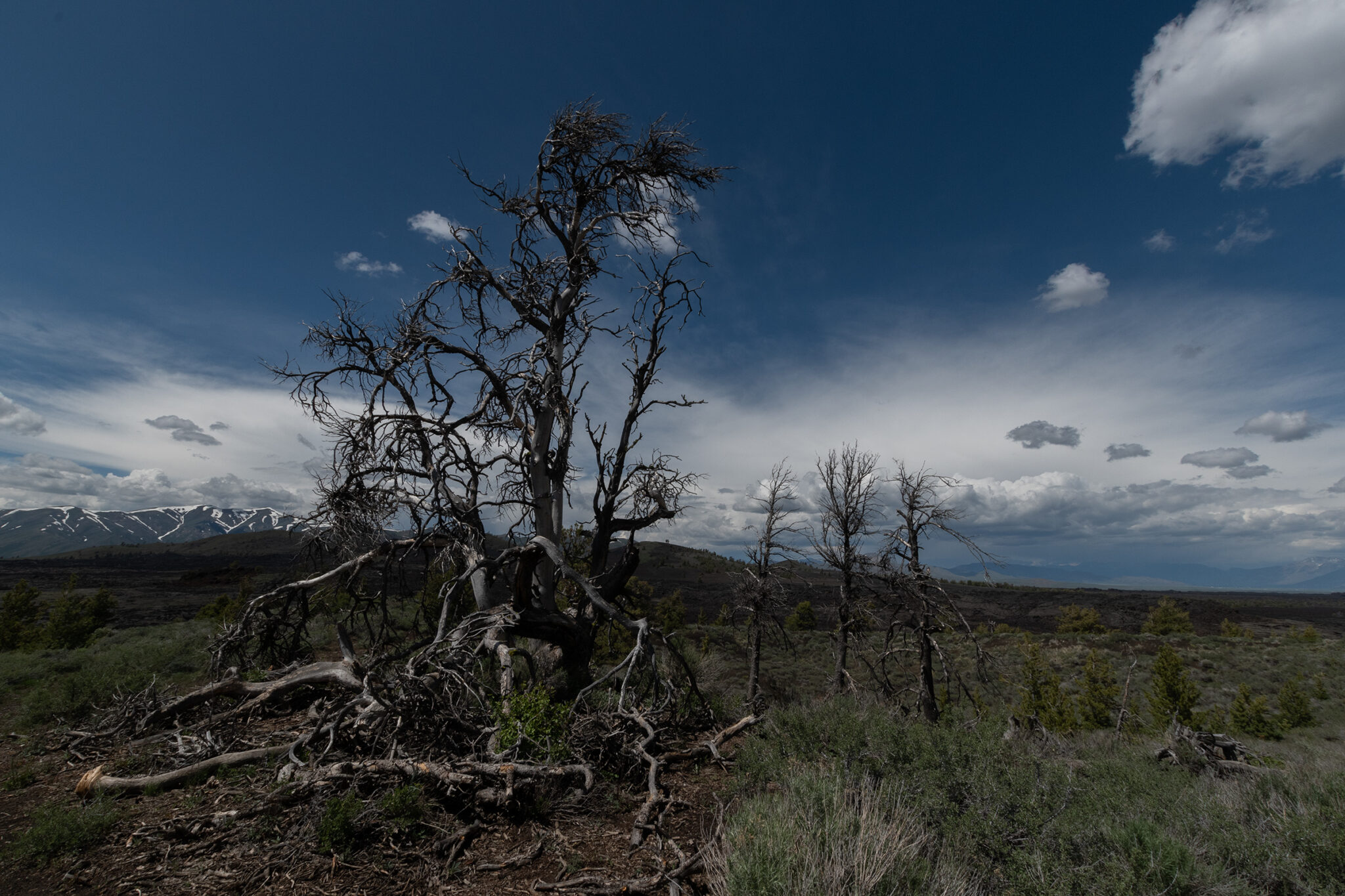
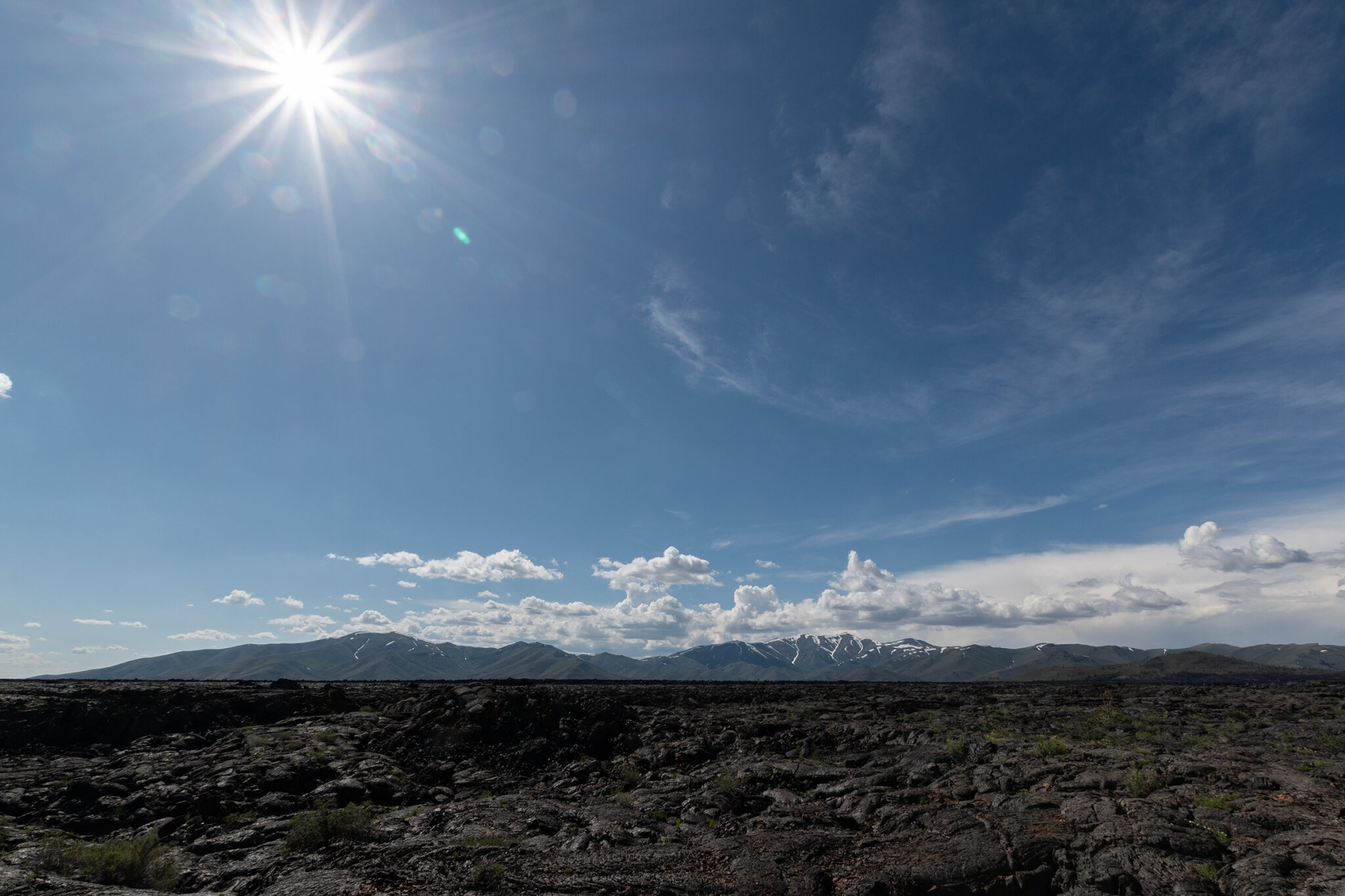
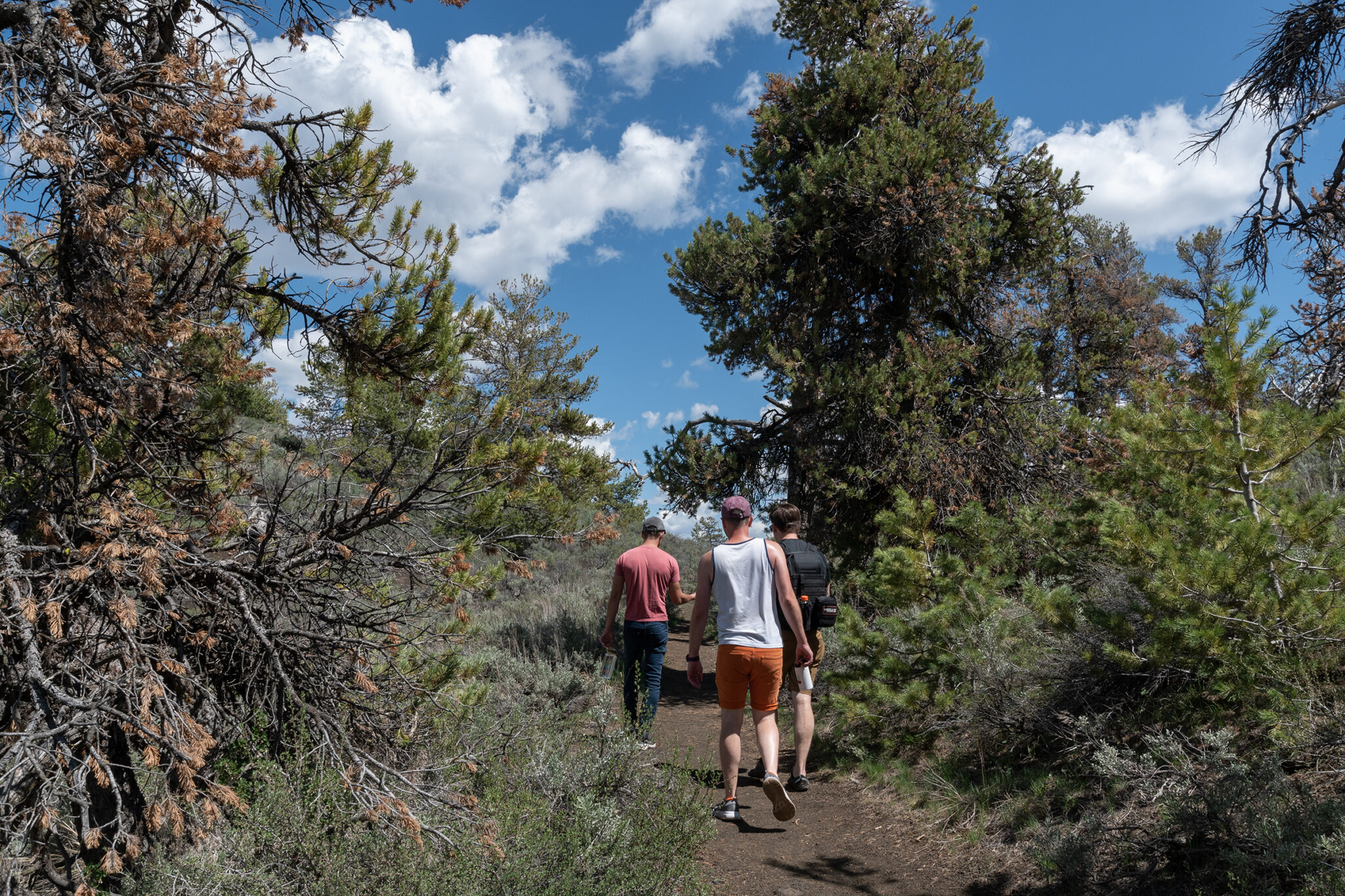
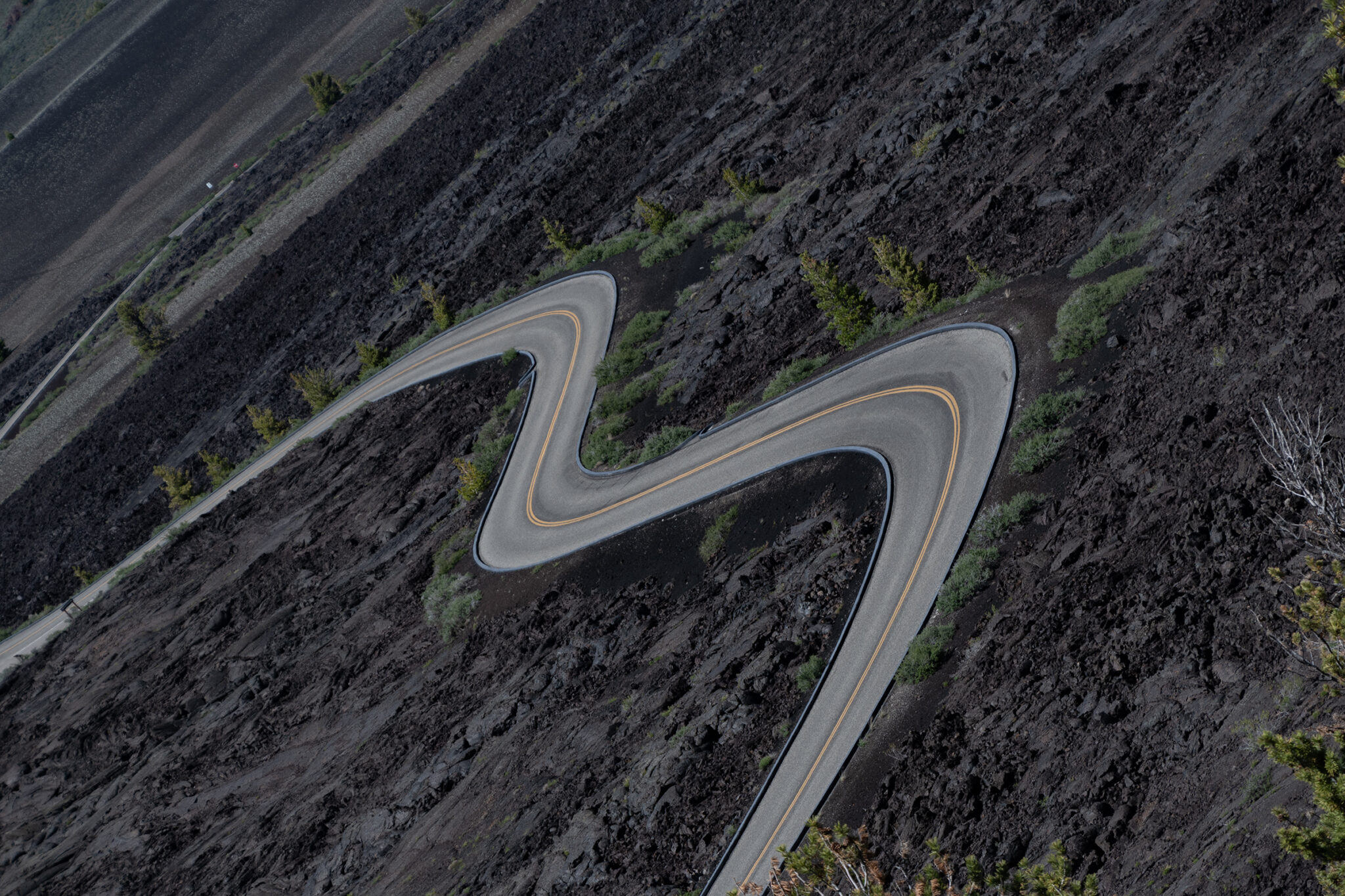
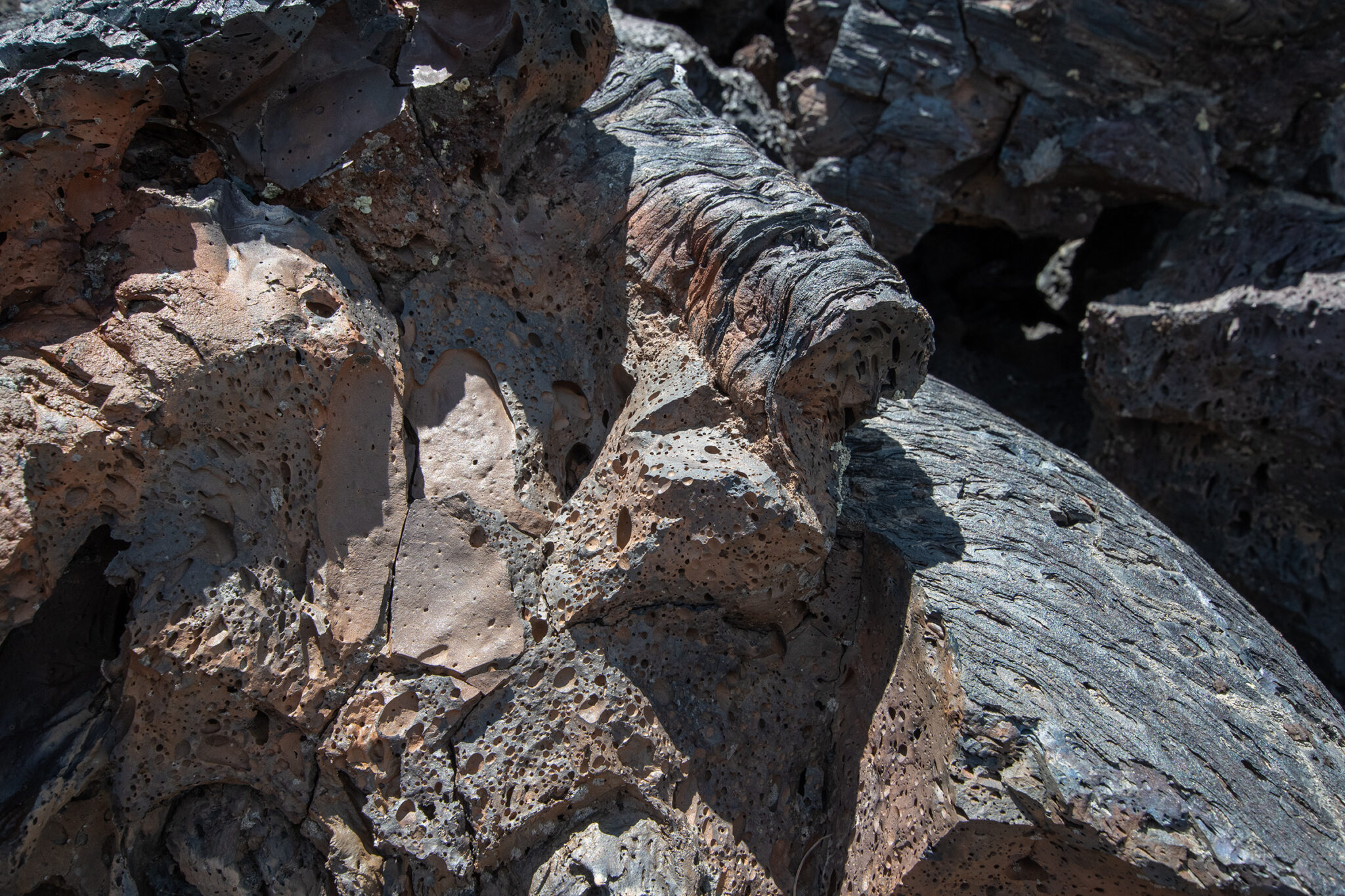
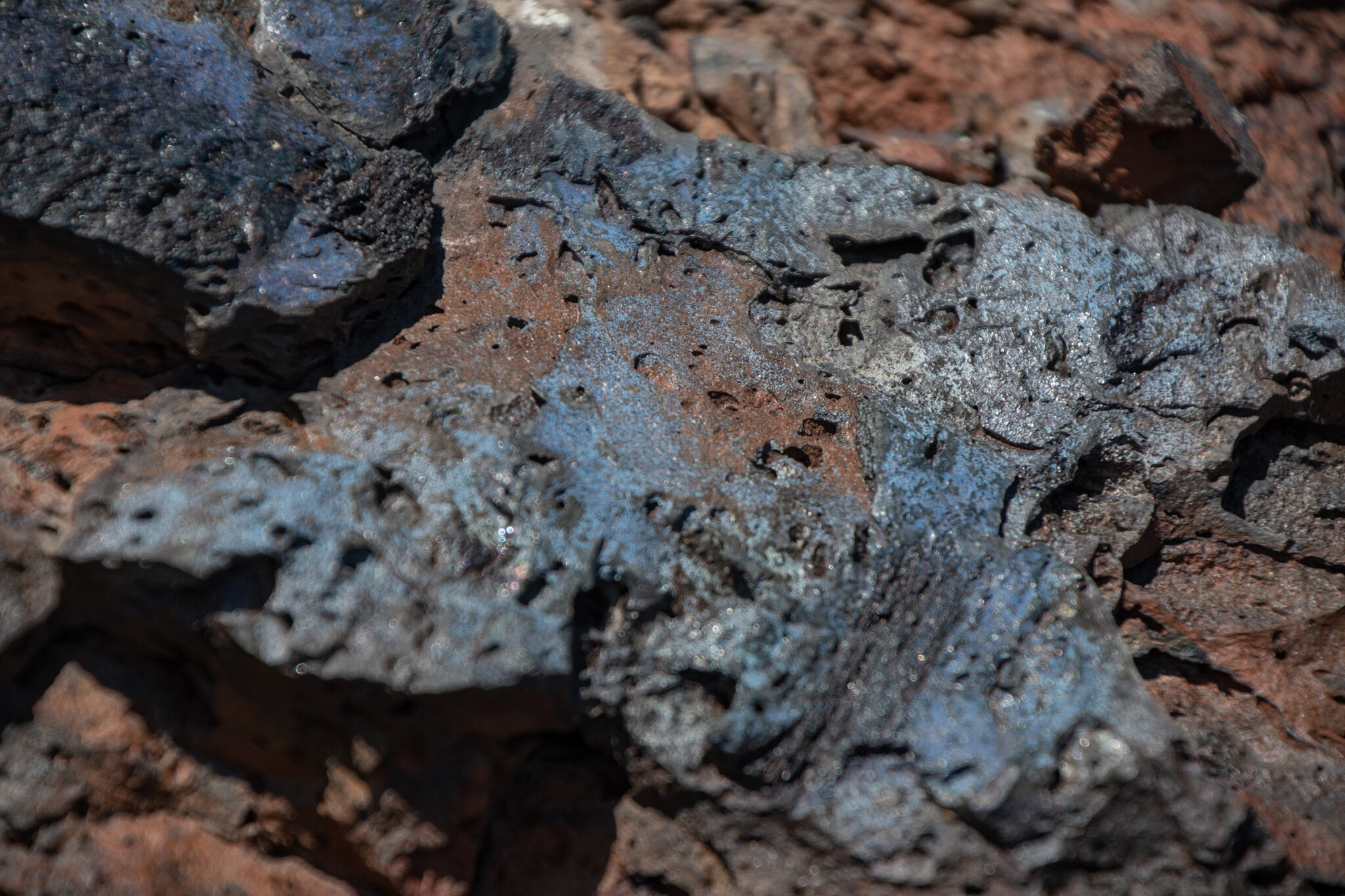
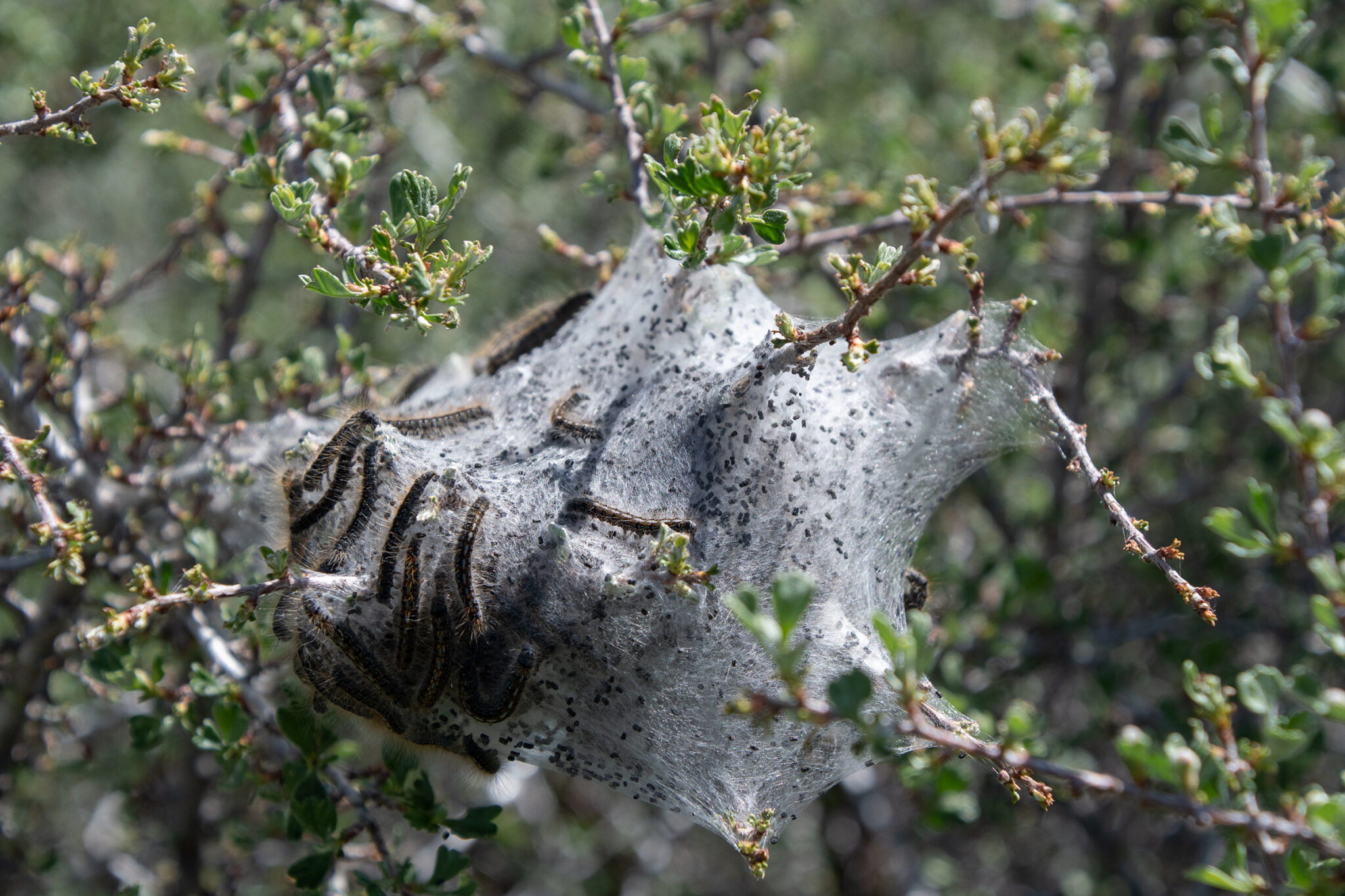
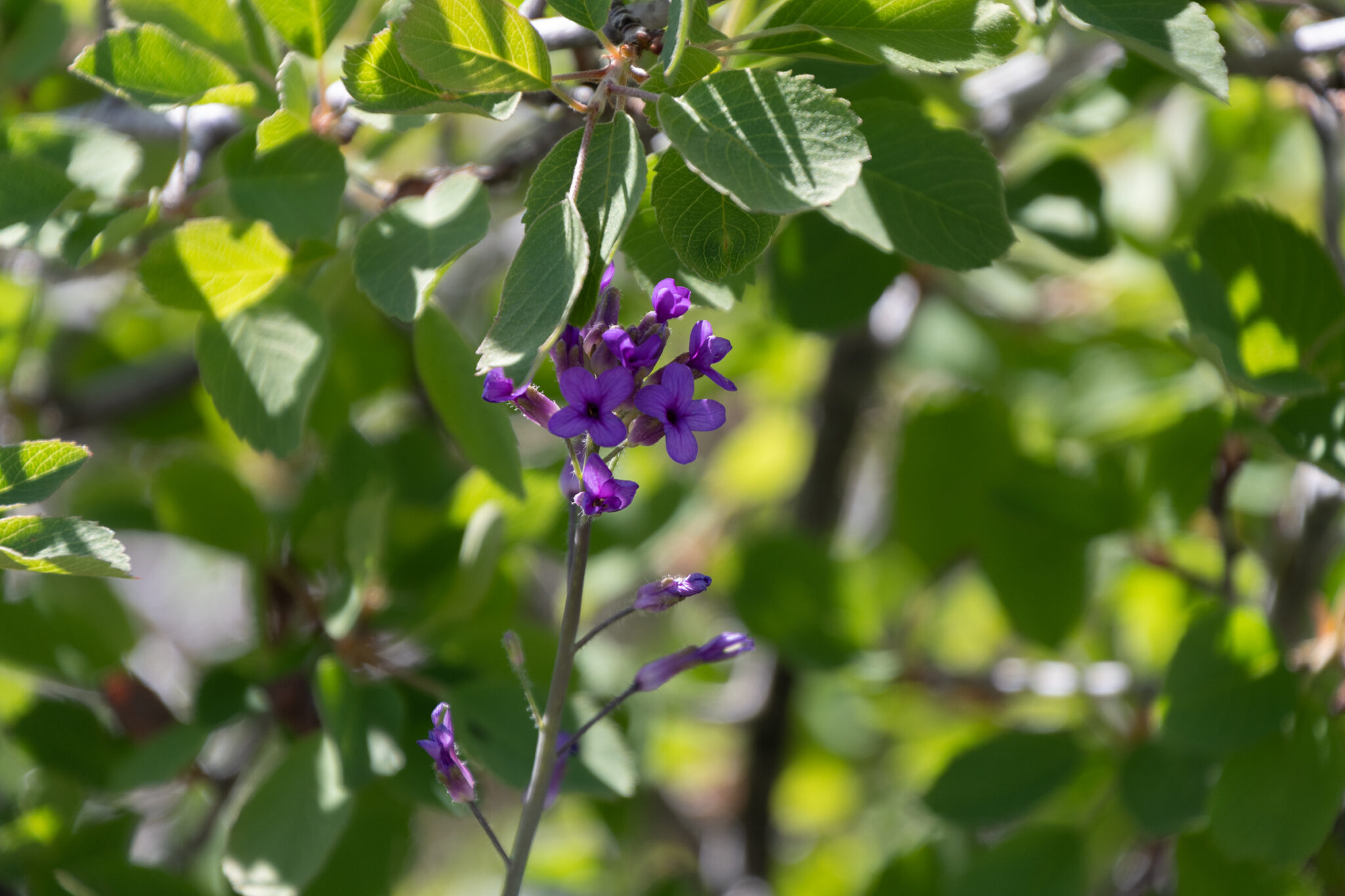
Tragically, the hikes into the caves lava tubes because they’re still snow-packed from a late winter storm. I was really looking forward to those, which I suppose means I’ll need to make my way back up here one day. On our hike, we did come to the entrance of The BatCave! — or, rather, a cave that bats are hibernating in, and was thus closed beyond its entrance, but the cold air rushing out of it made the cave feel like it was probably quite deep.
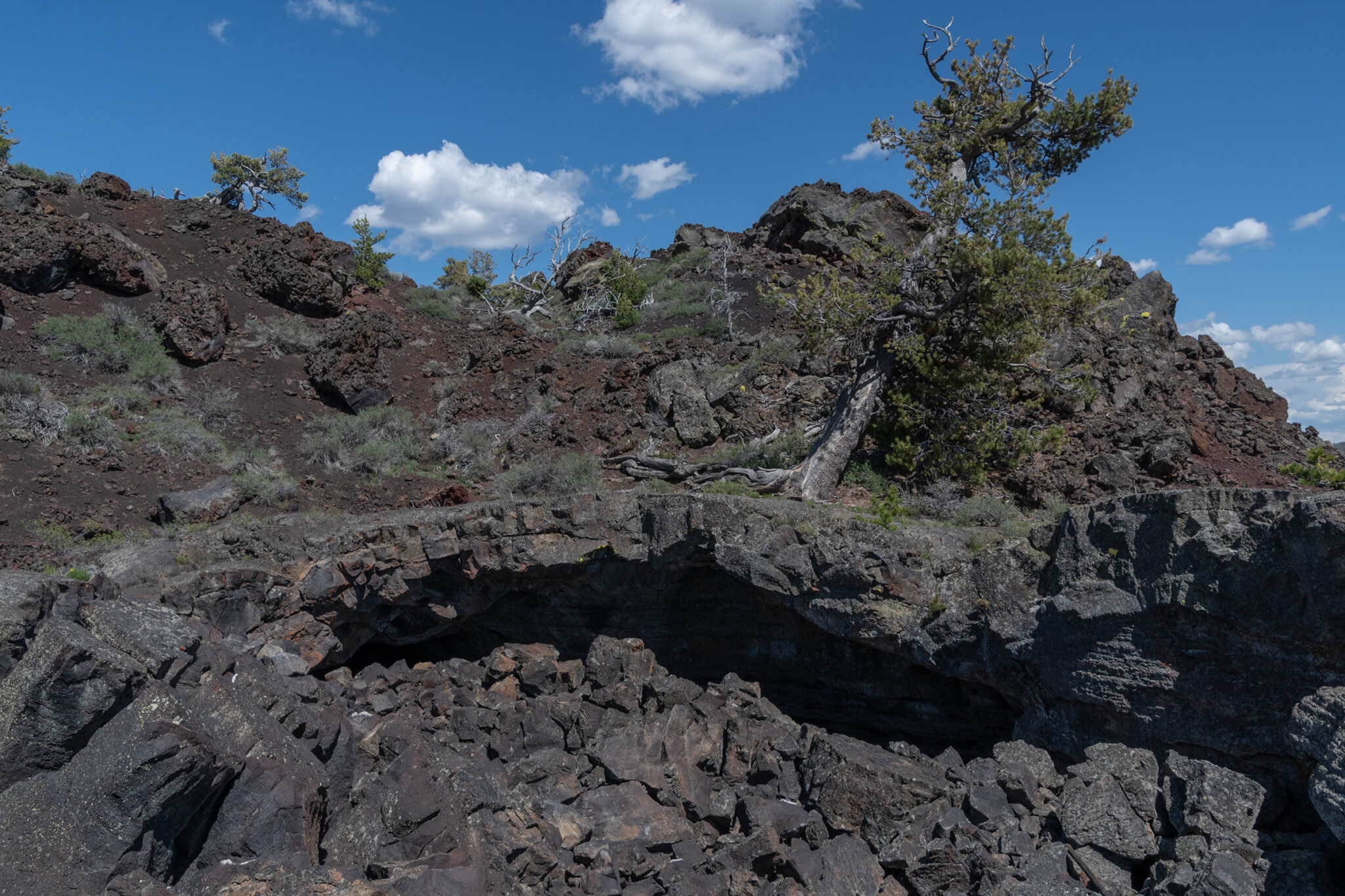
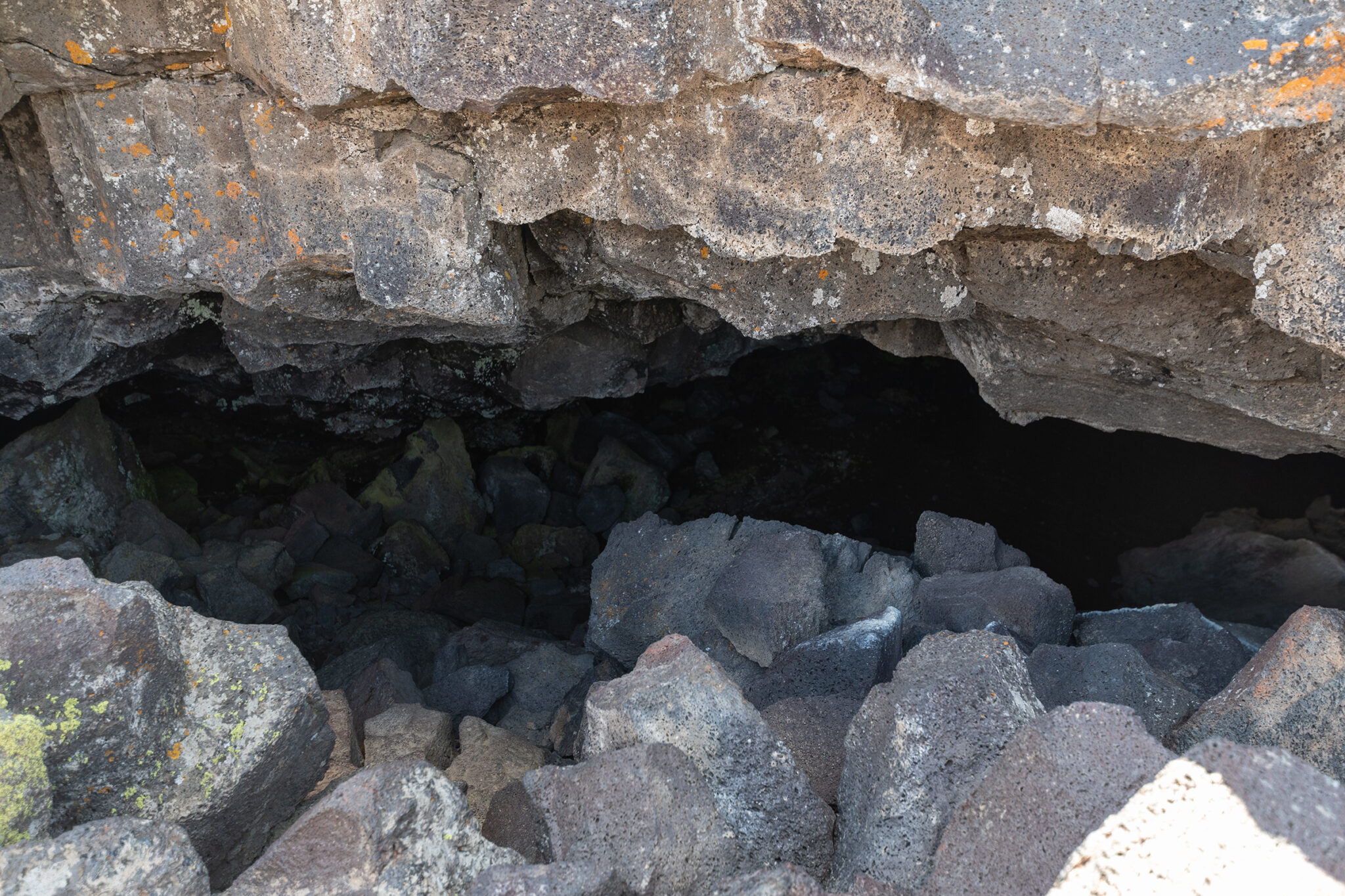
There were also “tree molds,” where oozing lava encased trees and branches and solidified before the wood burned away — or in other cases, the reverse, where lava seemed to have replaced wood or root systems and retained their texture and feel. Something between petrified wood and charcoal.
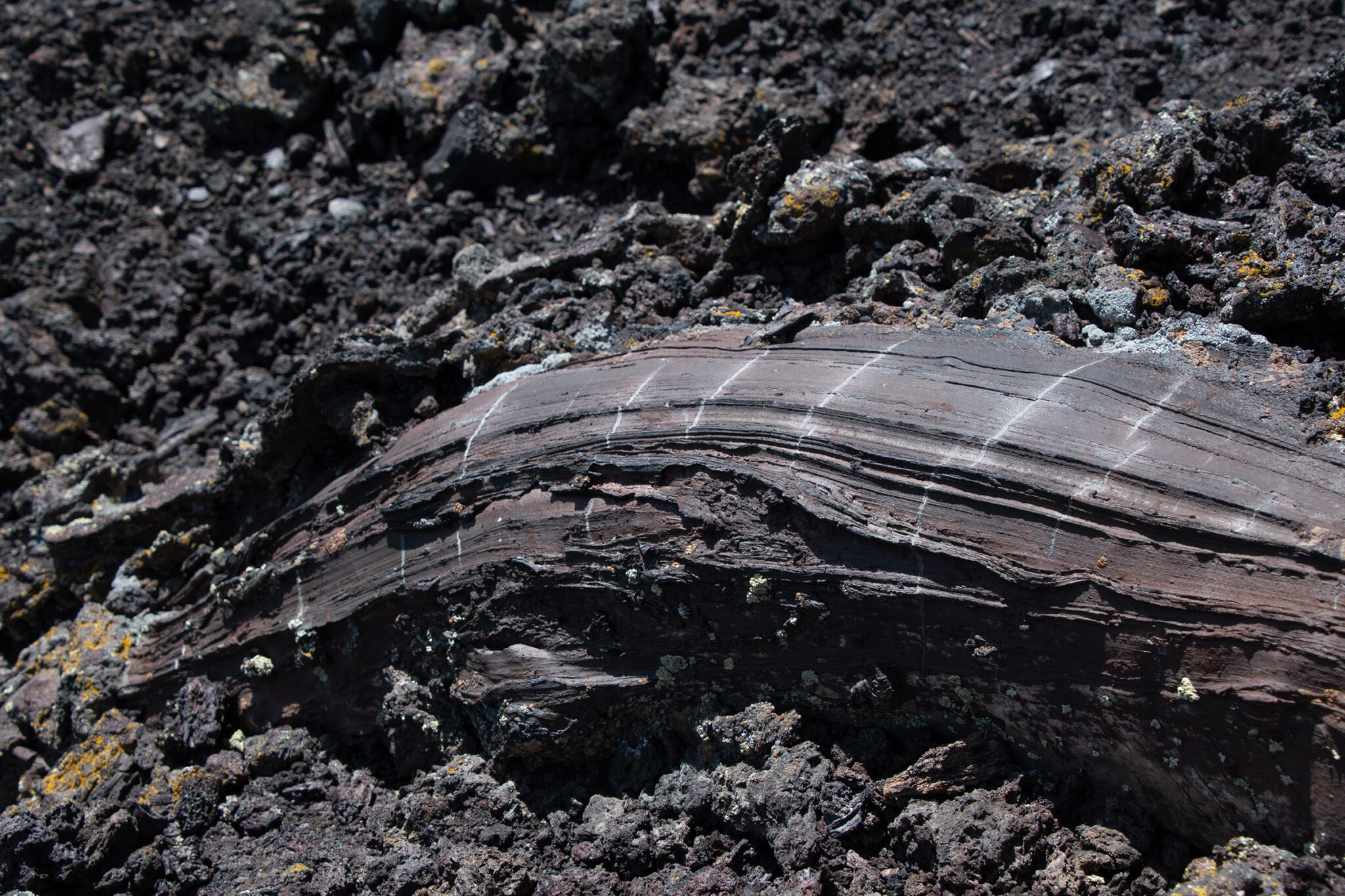
The Farmhouse
Tonight’s lodging in King Hill and Mountain Home, Idaho was the somewhat ominous looking wooden farmhouse without an address. I’m grateful that we managed to make it here in daylight because the place is actually much more inviting than it appears on the listing. Although as we slowly approached, EG suddenly said, “Oh, it is standing,” which I think sums up its curb appeal.
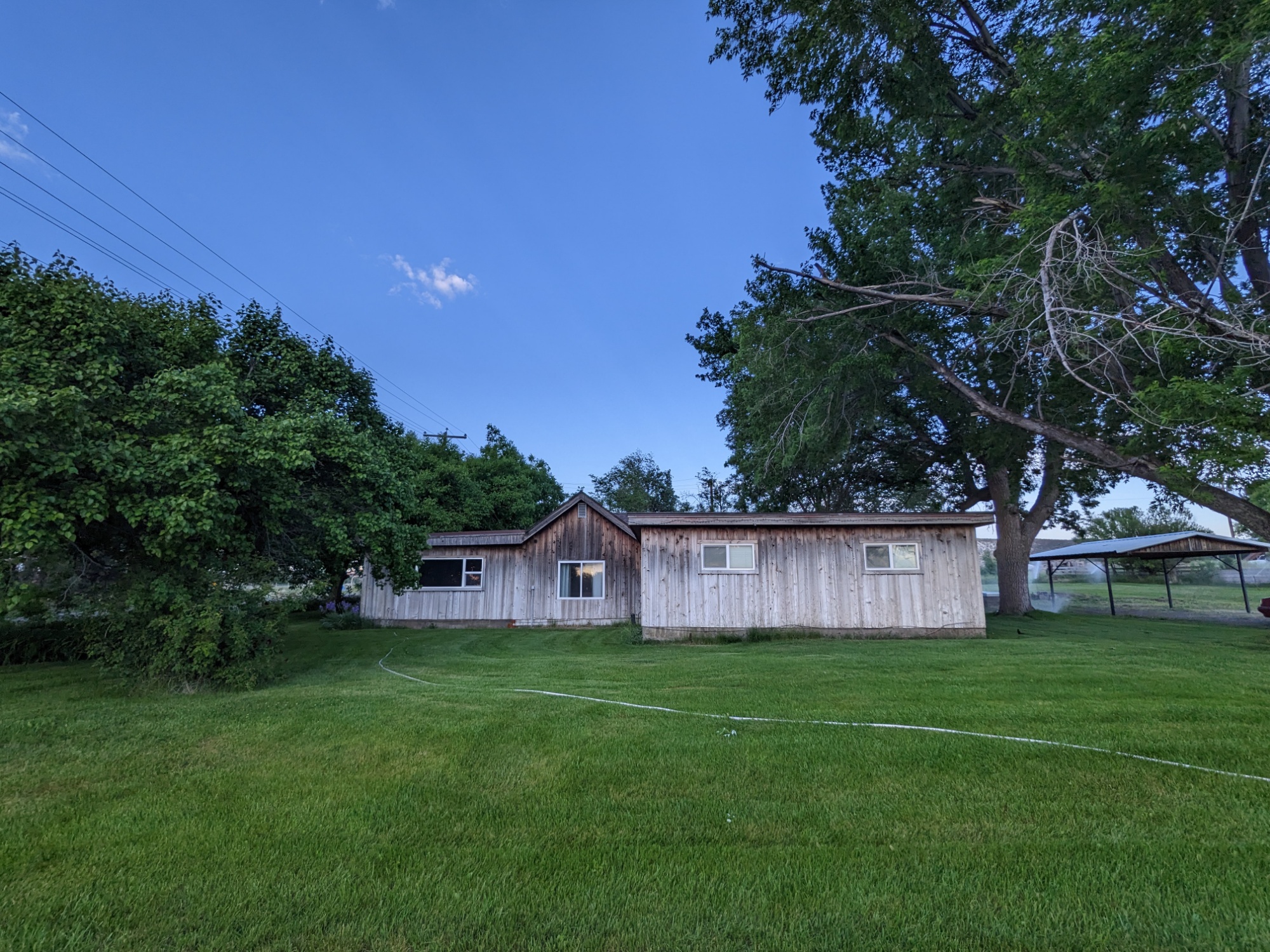
I suppose there’s been little mention of the cars over the past few days, as each has settled into its own brand of subtle dysfunction but continues its long cross-country trudge to the Great Northwest. George continues to fight periodically with the roof glass rattle, but the Fiero is running well. The Piazza still has its sloppy steering, and Evan was able to disable the heater thus restoring the usefulness of his air conditioning. And my Wagon’s spark plug mitigation is holding — and the distributor cap replacement seems to have also improved its idle, too — but it is still quite slow on hills. Hard to think I’m going to put it up for a fire sale soon… I’ve come to rather like it. And although Evan M has always planned to take the Piazza home, George is still very much undecided. He did finally buy a flight yesterday… but it is refundable.
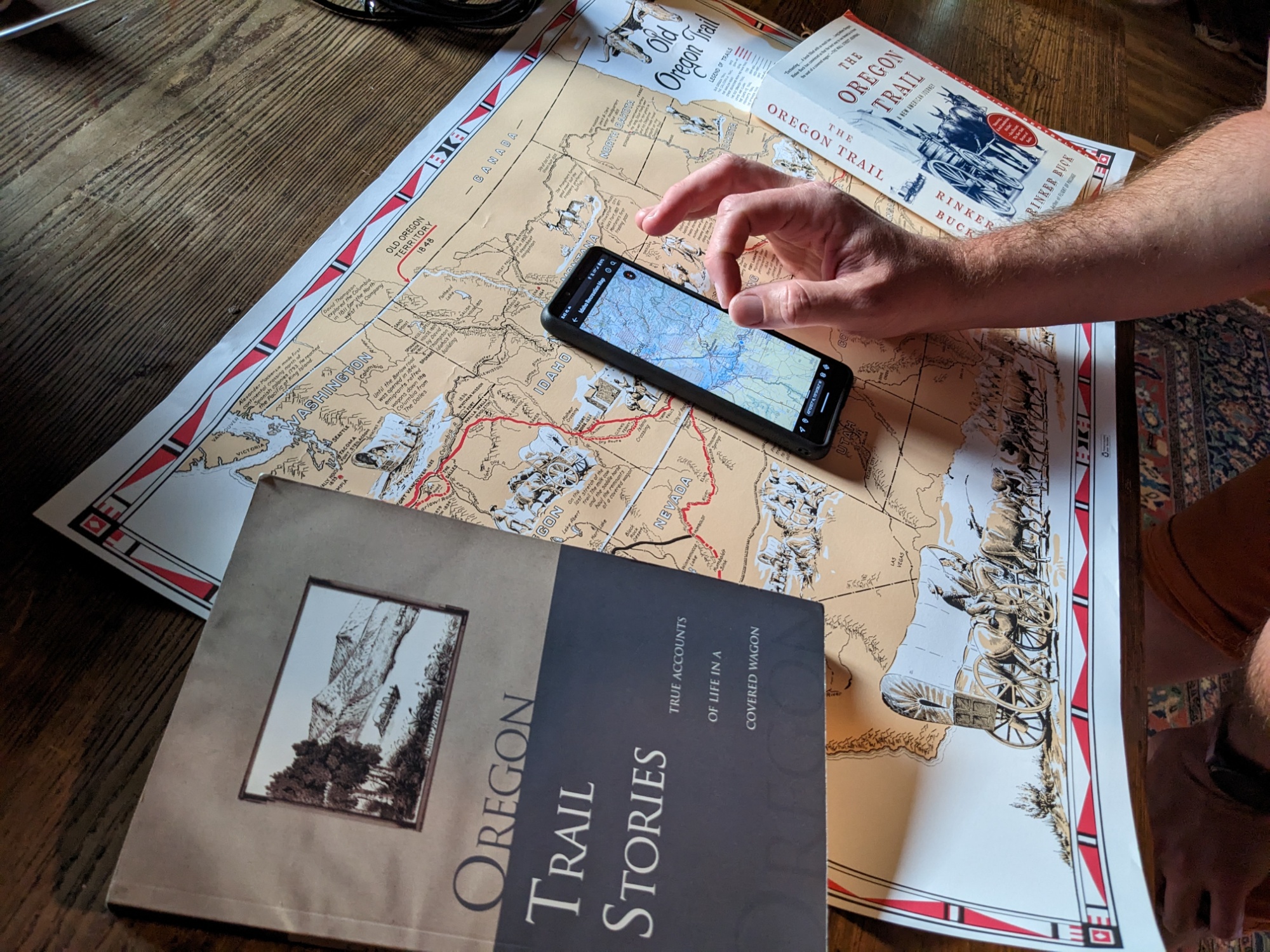
Not entirely sure what tomorrow brings. We know we will visit the Three Island Crossing State Historic Site in Glenns Ferry, where many pioneers crossed the Snake River. We’ll also stop at Fort Boise. But we may actually spend some time in Boise, which is not our usual style, but I did note a wish to come back to Boise when I passed through here in the Celica in 2019.
There is a “Main Oregon Trail Backcountry Byway” signed in this area, which I saw reference to once on an old PDF from Idaho’s Department of Transportation, but George and I can’t find it on any maps. And often “backcountry” means unpaved, which has been rough on both the Piazza and Fiero, so we may see if we can find where it starts but not sure if we’ll take it all the way to Boise.